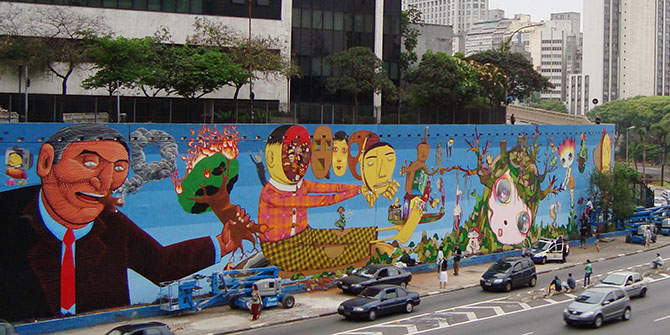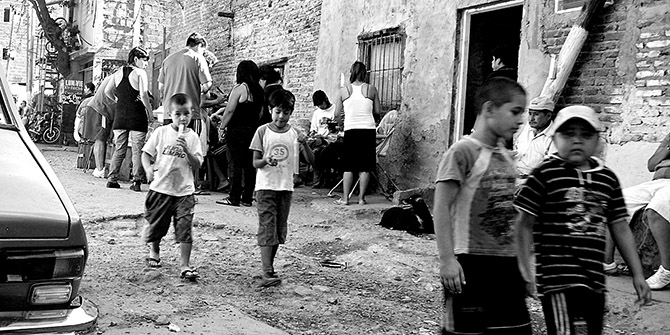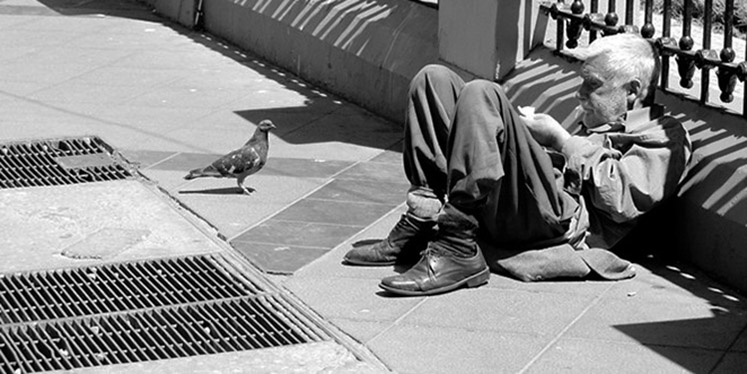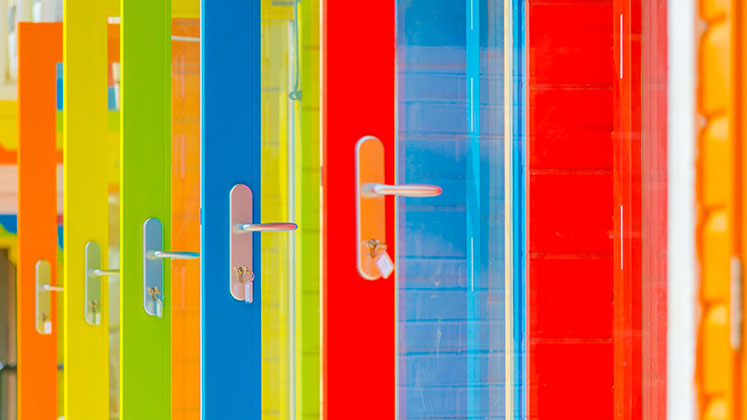 Repeated episodes of graffiti removal, resistance, and responses in São Paulo reveal a subtle shift in the power dynamic between urban artists, the public, and the state, writes Chandra Morrison.
Repeated episodes of graffiti removal, resistance, and responses in São Paulo reveal a subtle shift in the power dynamic between urban artists, the public, and the state, writes Chandra Morrison.
Nearly five and a half kilometres of graffiti murals on the concrete walls lining Avenida 23 de Maio converted this major São Paulo thoroughfare into a visual landmark, adding to the city’s reputation as a global hotspot for urban art.
That is, until early 2017. On 14 January, Avenida 23 de Maio’s colourful walls disappeared behind a layer of grey paint.

The corridor’s redecoration was one of the first actions of new mayor João Doria’s flagship urban policy Cidade Linda, which aims to turn São Paulo into a “Beautiful City”. Cidade Linda proposes to revitalise rundown areas of this sprawling Brazilian metropolis and create an aesthetically and experientially pleasing city environment by cleaning roadsides, trimming trees, and other janitorial efforts. With Cidade Linda’s strong emphasis on transformation of the visual sphere, removal of pixação tagging and other illicit inscriptions on urban surfaces is amongst the mayor’s priorities.
While Doria’s broader beautification plan has received largely positive reviews, erasure of the 23 de Maio murals proved deeply controversial, provoking an immediate backlash of public criticism and artistic resistance that featured widely in local media.

In part, this controversy reflects a uniquely Brazilian context in which two urban painting subcultures – graffiti and pixação – coexist side-by-side, each marking the cityscape in distinct ways. Whereas graffiti art features colourful large-format words and imagery produced predominantly at ground level, pixação typically comprises angular black lettering written at staggering heights and in even more staggering quantities across the vertical surfaces of São Paulo’s high-rises.
More notable than these stylistic and spatial differentiations, however, are dramatic differences in public and legal attitudes, which have become entrenched over the past decade.
International acclaim for Brazilian street art and the success of big names like Os Gemeos and Nunca on the international art market have helped to generate widespread support for graffiti artists, yet the public has an overwhelmingly negative impression of their pixação counterparts. This difference in perception emerges clearly in a recent survey reported in Folha de São Paulo which revealed that, while 85% of São Paulo’s residents are in favour of the city’s graffiti art, 97% dislike pixação.
Even more impressively, this perceptual division became enshrined in Brazilian federal legislation when in 2011 an amendment was passed to decriminalise acts of graffiti, deeming them an artistic contribution to the urban landscape and categorically different to pixação vandalism. Still, graffiti’s newfound legality is contingent on assessments of artistic merit and authorised status, ultimately resulting in a blurry and highly subjective boundary to maintain in practice.
Doria’s vision for São Paulo mirrors popular conceptions of graffiti as art and pixação as crime. With pixadores squarely designated as enemies of the city, the mayor promptly passed a new law which increases fines for those caught in the act to R$5,000, or twice as much for repeat offenders.
At the same time, attuned to the global penchant for well-curated urban art, Doria plans to establish designated graffiti zones, called grafitódromos, drawing inspiration from the success of the Wynwood art district in Miami. And – despite offering no practical indications of how this would be verified – he has suggested that graffiti produced under authorised conditions will be welcomed in São Paulo.
The irony is, of course, that the 23 de Maio murals were authorised paintings. Building on a long tradition of artistic intervention on the Avenue walls that extends back at least to the late 1980s, the most recent murals were produced in December 2014 and January 2015 during a large event called “Graffiti na 23 de Maio” which was organised by local graffiti artists with support of the São Paulo Municipal Secretary of Culture under the prior Haddad administration.
Publicly, the new government justified the removal by claiming the murals had been deteriorated and tainted by pixação. Yet this move simply makes officials’ dismissal of possibilities to refurbish the paintings, or even to recognise the extensive history and organic development of urban art practices in locations like Avenida 23 de Maio, all the more conspicuous.
Graffiti artists responded to the high profile erasure with swift and diverse acts of artistic resistance.
Replicating the distinctive cursive handwriting of his tag found throughout the cityscape, Iaco intervened on Avenida 23 de Maio by writing the mayor’s name twelve times in linear progression across the newly painted wall. Simple yet conceptually rich, by swapping his name for that of “Doria” Iaco’s intervention forces the mayor to erase his own identity upon restoring the grey paint to pristine condition.

Elsewhere in the city, artivists Mundano and Mauro Neri took to the streets to engage in dissident cleaning. Using a sponge and soapy water, they scrubbed away layers of whitewash to expose the artworks that lay hidden underneath. In a video documenting this activity in the Largo da Batata, Mundano announced his participation in Doria’s call for the public to help create a beautiful city, by allowing the colours of his paintings to re-emerge and brighten the cityscape. Meanwhile, Mauro’s efforts to reveal his artistic message – based around the concept veracidade, to see the city with new eyes – resulted in his detainment by the police at the end of January. He was later released, but not before drawing significant media attention to the incident.
Others took their creative production into the depths of São Paulo’s periphery. Both Does and Zezão posted photos on Instagram of their paintings in Vila Flávia, a community located in São Mateus in the city’s Eastern Zone that is chronically neglected by city officials but benefits from active grassroots cultural initiatives led by the Grupo Opni graffiti collective. Captions and comments implied that their artwork would last longer in the periphery not only due to local residents’ warm receptiveness to graffiti culture and its artists’ drive to improve the sensorial experience of marginalised spaces, but also because they doubt Doria’s concern for cleanliness and attractive urban conditions will extend to the city’s extremities.
All of these actions challenge the very notion of beauty at the core of Doria’s programme. They question both who defines and who benefits from such urban beautification. And they ask how this vision for a beautiful city will address the deep socio-spatial inequalities and ecological pressures that saturate the São Paulo cityscape, in a way that effects change beyond mere surface treatment.
This artistic critique of the financial priorities and values of the state is not new. It is a sentiment that I came across repeatedly during fieldwork in 2008 and 2009 at the height of a previous graffiti conflict, which had been provoked by the Kassab administration’s attempts to reduce São Paulo’s visual pollution via the Lei Cidade Limpa (Clean City Law, 2006). As I’ve explored elsewhere, this policy too provoked a contentious relationship with the city’s graffiti artists, who began to challenge the government – to cite Mundano’s artwork – to “erase poverty” or “wipe out political corruption” rather than “the art of the people.”
Certainly Doria’s clean-up initiative is not the first controversial graffiti removal to hit São Paulo in recent years. The current dispute speaks to debates that have surfaced time and again over the past decade about the place of graffiti art – and of pixação – in the urban landscape.
Nor is it the first time that murals along Avenida 23 de Maio have been at the centre of such aesthetic altercations. However, official reactions to these past conflicts prove intriguing. In 2008 public outcry at the prefeitura’s erasure of a large panel painted by Os Gemeos and friends resulted in an invitation for the artists to repaint the wall, a process documented in the film Cidade Cinza. And again in 2014, when workers hired by the Haddad government covered over a painting by Nunca, originally commissioned by SESC in 2005, the contracted company not only issued a public apology for their mistake, they also bankrolled production of a replacement mural.
What these multiple episodes of graffiti removal, resistance, and responses collectively reveal is a subtle shift in the power dynamic between urban artists, the public, and the state relating to the ability of citizens to define the urban image – not merely in aesthetic terms, but in imagining the very idea of the city itself.
Notes:
• The views expressed here are of the authors rather than the Centre or the LSE
• Please read our Comments Policy before commenting





